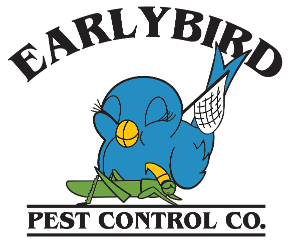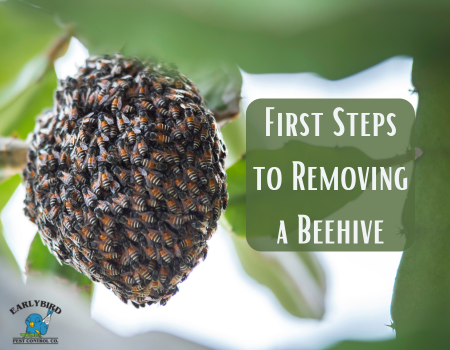Discovering a beehive on your property can be a startling experience. Whether it’s tucked under your roof, hanging from a tree, or nestled in an exterior wall, a beehive can pose potential risks to your family, pets, and even your home. Although bees play an essential role in pollination and maintaining ecological balance, having a hive too close for comfort can lead to unwanted interactions, especially for those with bee allergies.
Why Bees Nest Near Homes
Bees, particularly honeybees, are naturally drawn to spaces that provide shelter and protection for their hive. Common locations include:
- Tree branches or hollows
- Roof overhangs or eaves
- Wall cavities or attic spaces
- Chimneys or garden sheds
Bees seek out these areas because they offer protection from the elements and predators while providing enough room to establish a thriving colony. The moment bees choose a spot and start building their hive, they settle in quickly at that spot. If left unchecked, the hive can grow larger and more complicated to remove, making early intervention crucial.
Step 1: Stay Calm and Observe
The first and most important step in removing a beehive is to remain calm. Bees typically don’t attack unless they feel threatened, so avoid disturbing the hive. It can be tempting to try and knock it down or spray it with pesticides, but this can agitate the bees, increasing the chances of stings and further spreading the problem.
Instead, take a few moments to observe the hive from a safe distance. Identify where the bees are entering and exiting, and note the size of the hive. Also, pay attention to the activity level. Is the hive small with only a few bees, or is there constant buzzing with a significant number of bees coming and going? This information will be helpful for the next step—deciding how to proceed.
Step 2: Evaluate the Risk
Once you’ve observed the hive, evaluate the potential risk it poses. Here are a few key questions to ask:
- Is anyone in your household allergic to bee stings? This is one of the most crucial factors. Bee stings can cause severe reactions in allergic individuals, sometimes leading to life-threatening situations.
- Is the hive in a high-traffic area? If the hive is near your front door, backyard, or another frequently used space, the risk of accidentally disturbing the bees is higher. This increases the likelihood of stings and potential harm to you and your family.
- Is the hive growing? A small beehive can expand rapidly, especially during the warmer months. If you notice an increase in bee activity, it’s essential to act sooner rather than later.
If any of these factors apply to your situation, it’s best to call a professional pest control service like Early Bird Pest Control to safely and efficiently remove the hive. Bees are beneficial to the environment, so having them relocated by professionals ensures they continue their vital role without posing a risk to your household.
Step 3: Don’t Attempt DIY Beehive Removal
Though DIY hive removal may seem like a cost-effective solution, it’s strongly discouraged for several reasons. Bees, particularly honeybees, are protected in many areas due to their importance in pollination and agriculture. Using harmful chemicals or improper removal techniques can not only harm the bees but may also result in fines or penalties if bee protection laws are violated.
Moreover, beehive removal can be dangerous. Bee colonies are highly organized and protective of their hives, especially when they feel threatened. Attempting to knock down or remove the hive yourself can provoke an aggressive reaction from the bees, leading to multiple stings. These stings can cause serious health risks, especially if you are allergic or if there are many bees in the hive.
Step 4: Contact a Professional Beehive Removal Service
Once you’ve evaluated the risk and ruled out DIY removal, the next step is to contact a professional bee removal service. Pest control professionals are trained to safely and humanely remove bee hives without harming the colony or risking harm to you. They often work with local beekeepers to relocate the hive to a safer location where the bees can continue their vital work without endangering humans.
When choosing a bee removal service, make sure they have experience in dealing with bee hives. Not all pest control companies specialize in bees, so it’s important to choose a service like EarlyBirdPest.net, which has the expertise and equipment to handle this delicate task.
Step 5: Beehive Removal and Relocation
Once the professionals arrive, they will assess the situation and decide on the best removal method. The process generally involves:
- Assessing the hive: Professionals will inspect the hive’s size, location, and bee species to determine the best approach.
- Suiting up: Bee removal experts wear protective gear to prevent stings while handling the hive.
- Smoke application: Bees are often calmed using smoke, which interferes with their communication and makes them more manageable during the removal process.
- Hive removal: The professionals will carefully remove the hive and relocate it to a safe environment. In some cases, sections of the home may need to be opened to access the hive, particularly if it’s hidden in a wall or roof space.
- Bee-proofing: Once the hive is removed, the area should be thoroughly cleaned to remove any honey or pheromones that could attract future bee swarms. Sealing up cracks or gaps in your home’s exterior can prevent new colonies from forming.
Step 6: Prevent Future Beehive Infestations
After the hive has been safely removed, it’s important to take steps to prevent bees from returning. Some preventative measures include:
- Sealing cracks or gaps in exterior walls, chimneys, and vents
- Keeping garbage cans sealed to prevent attracting bees
- Removing or trimming back trees and plants that are close to your home’s structure
- Regularly inspecting your property for signs of new bee activity
By staying vigilant and taking these preventative steps, you can minimize the chances of another beehive forming on your property.
Removing a beehive is a task that requires careful planning, knowledge, and often, professional help. Bees are crucial to our ecosystem, and improper removal can harm them or put you and your family at risk.


Recent Comments